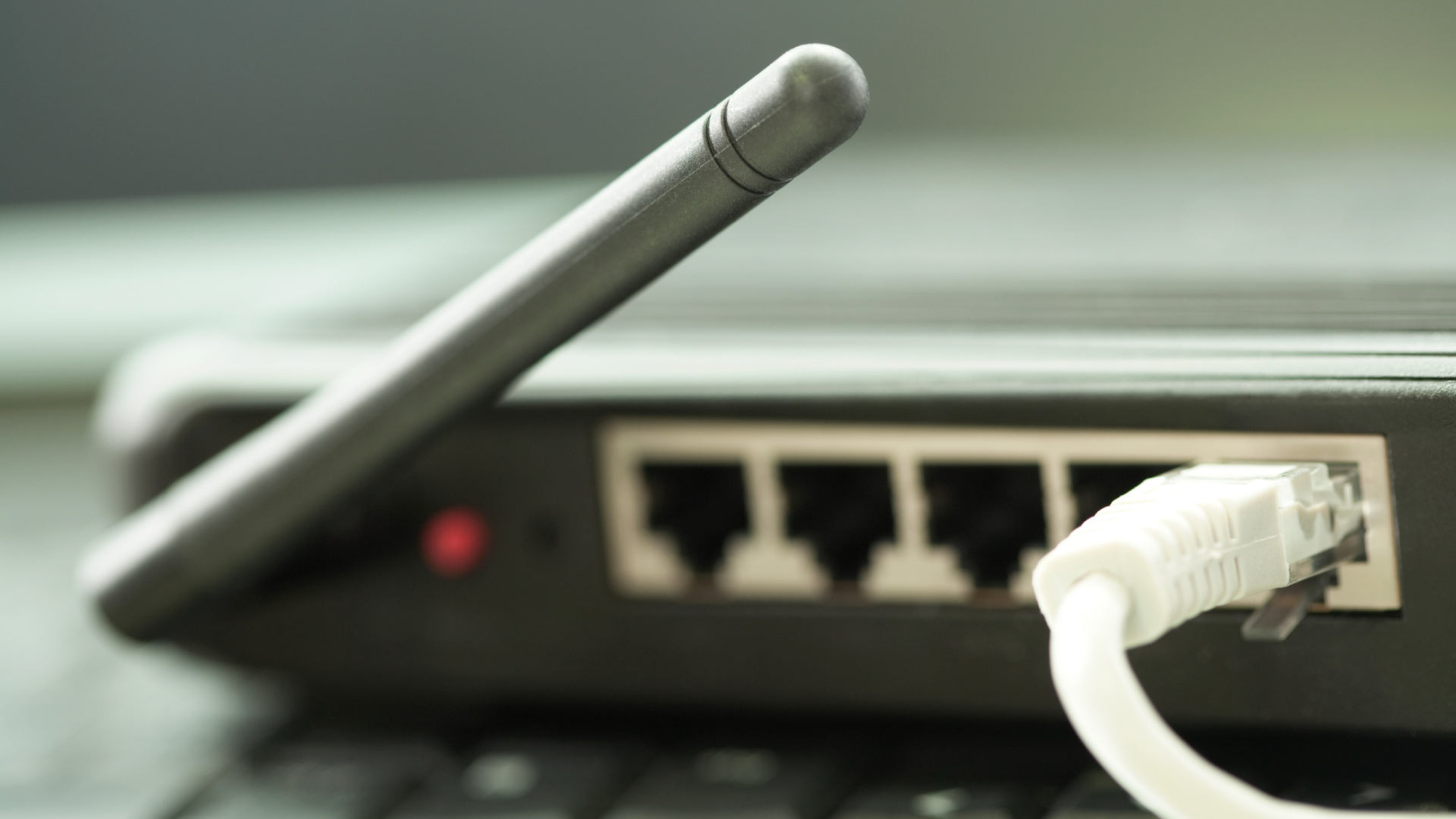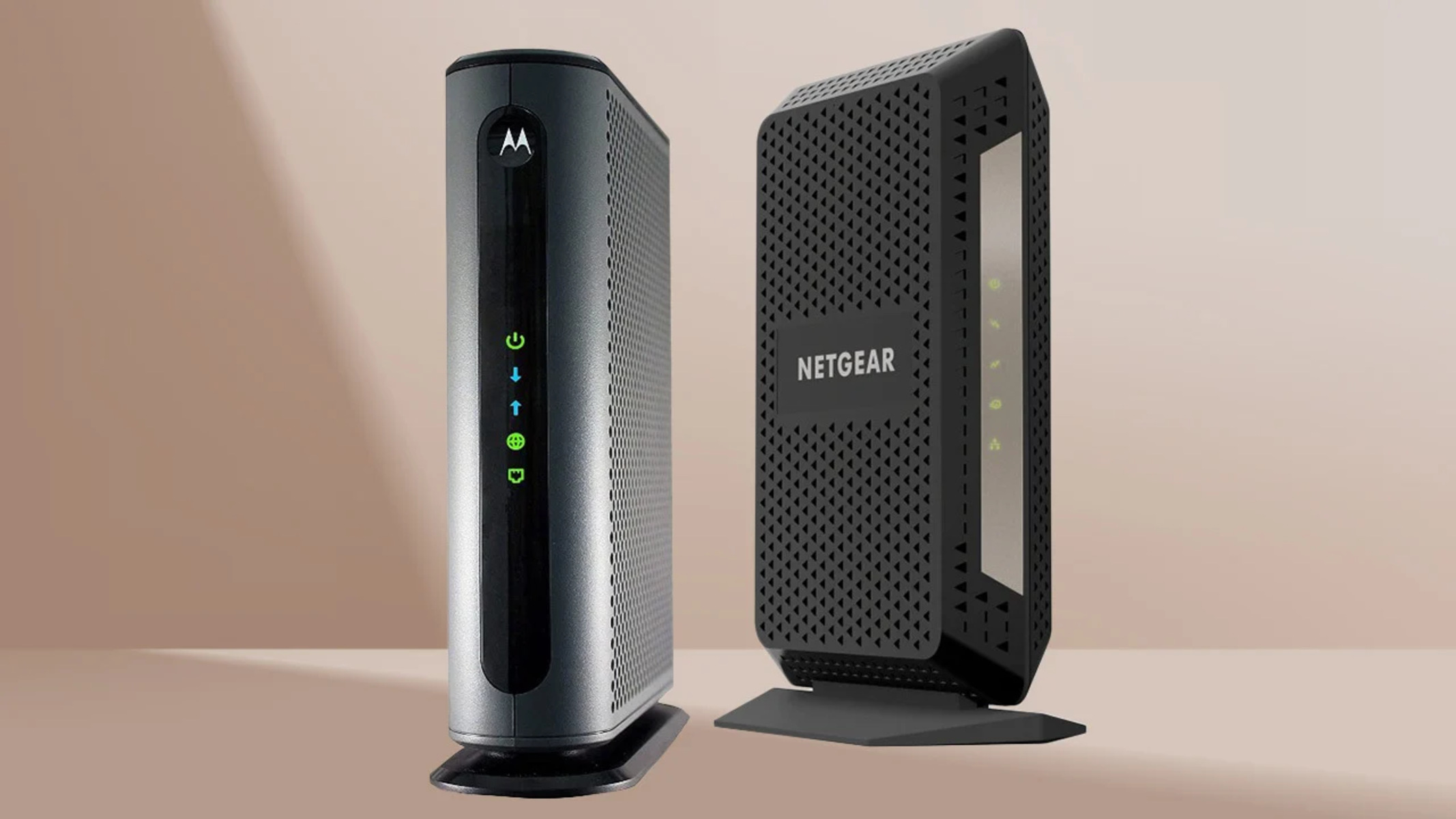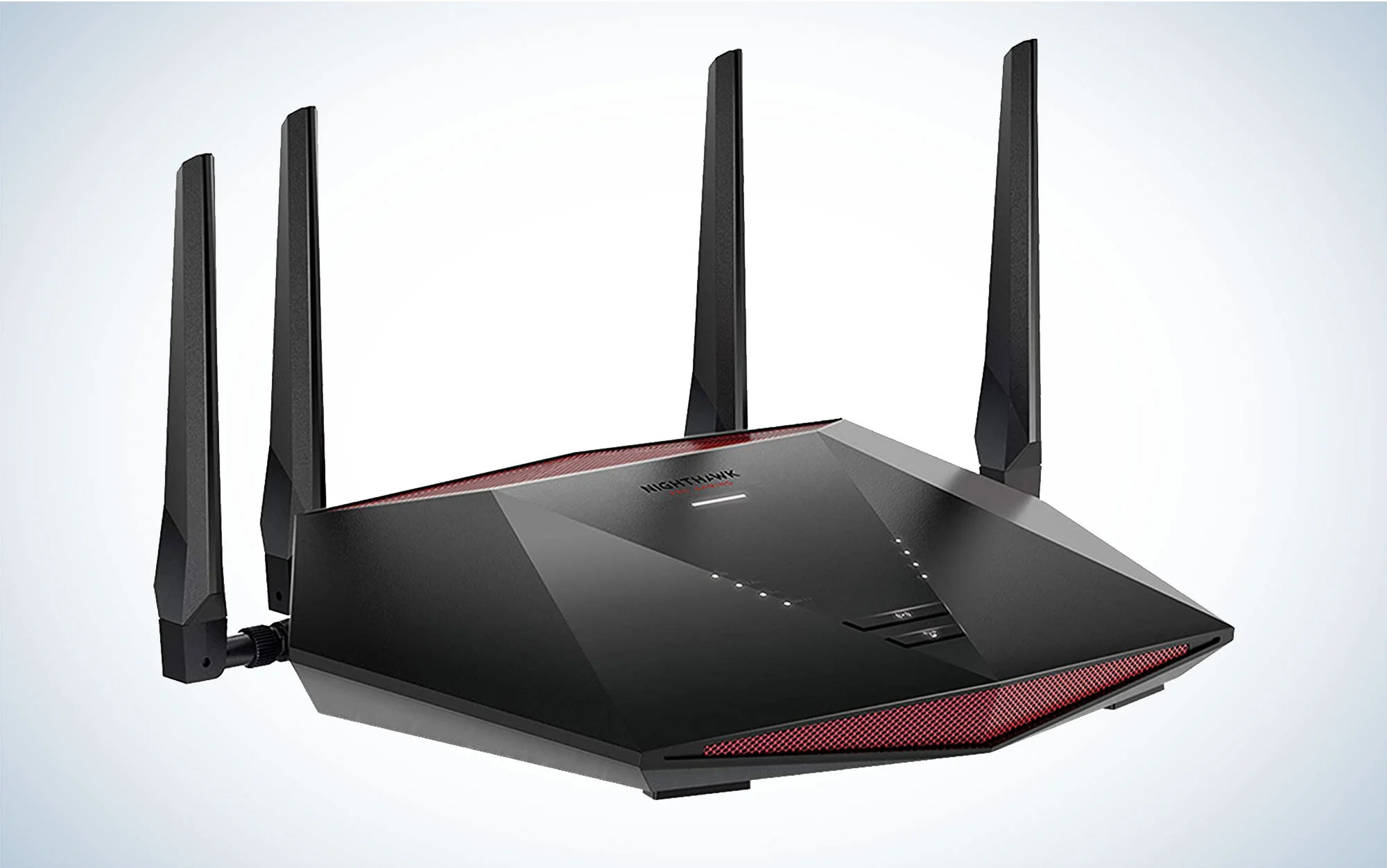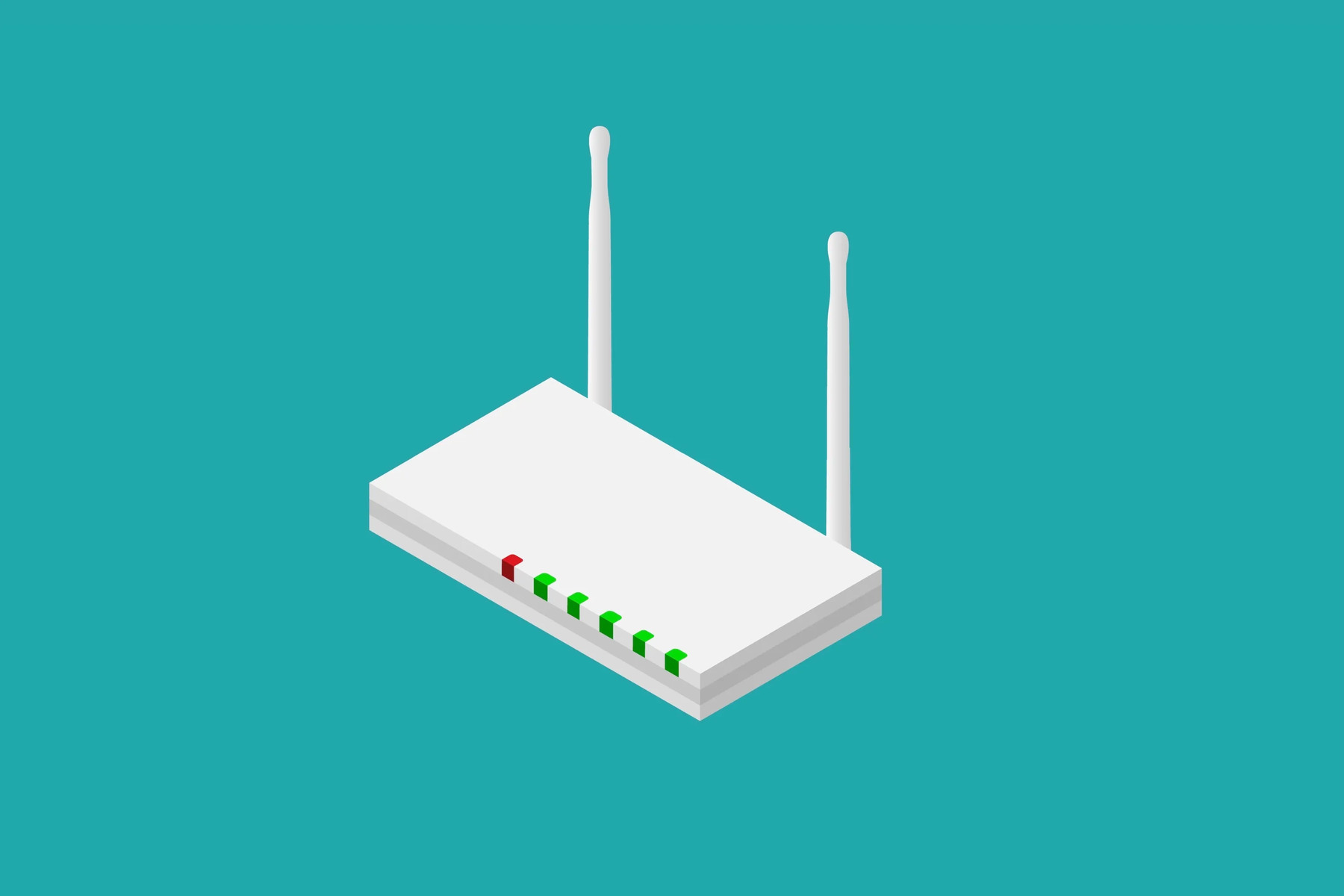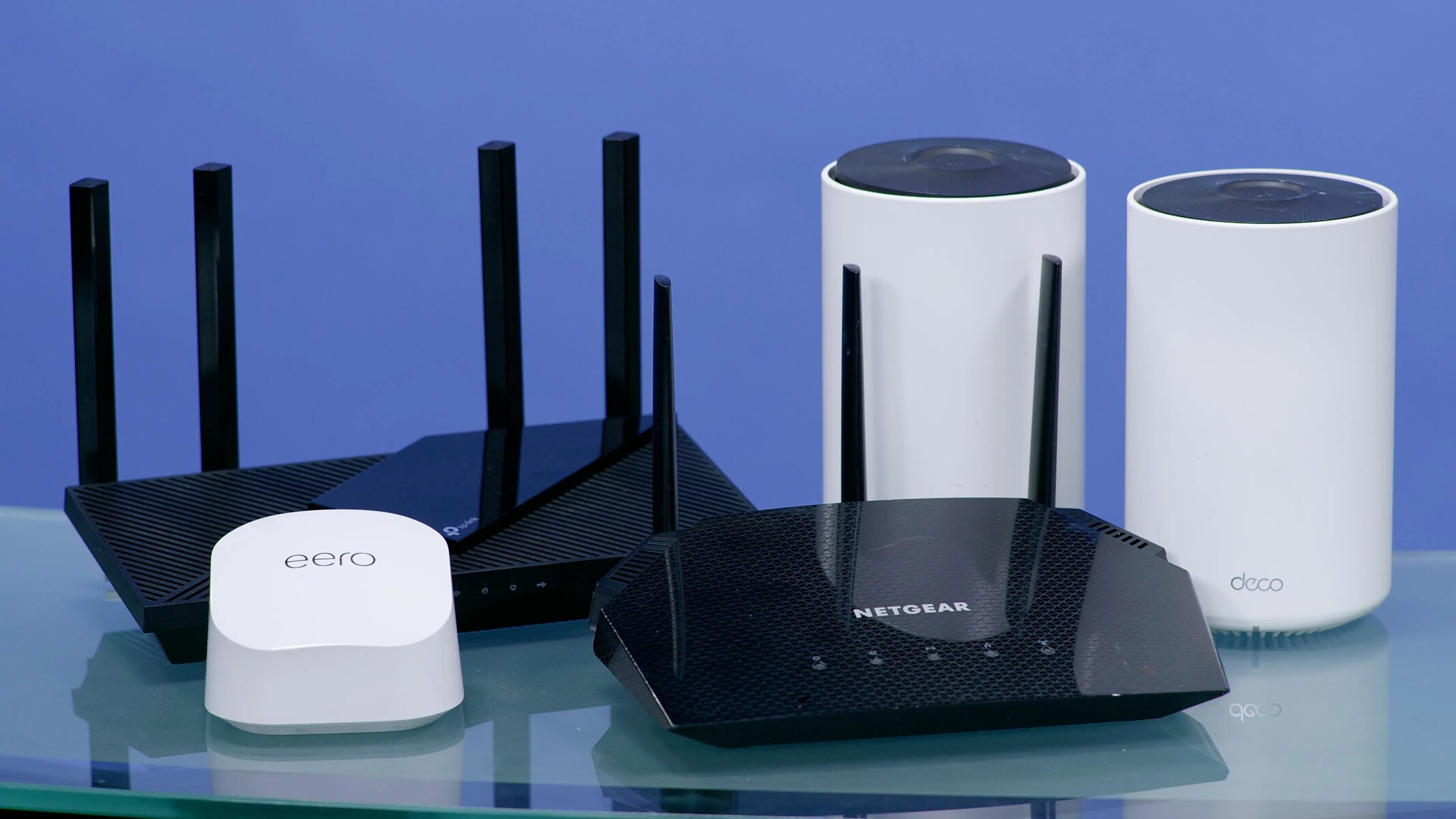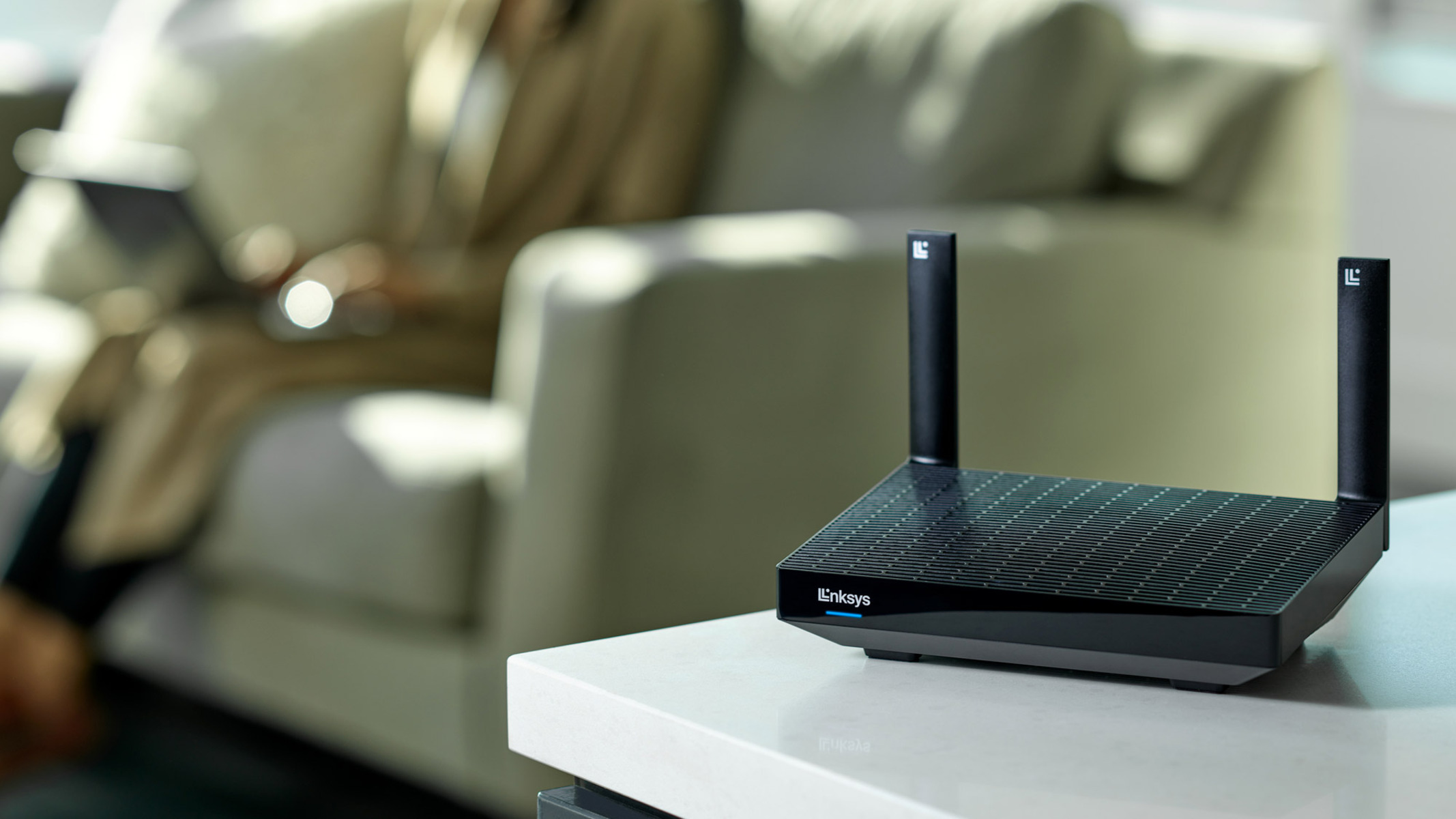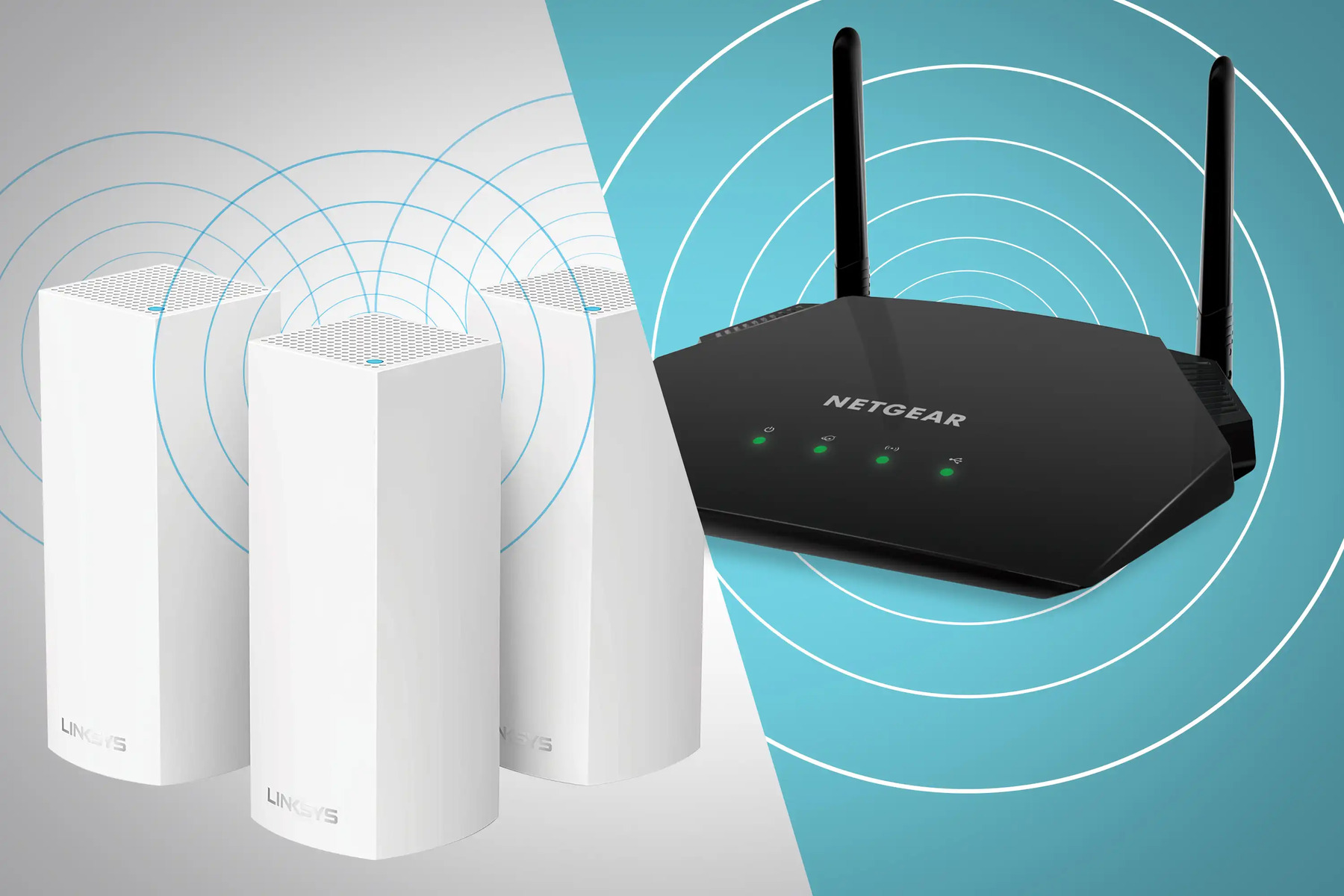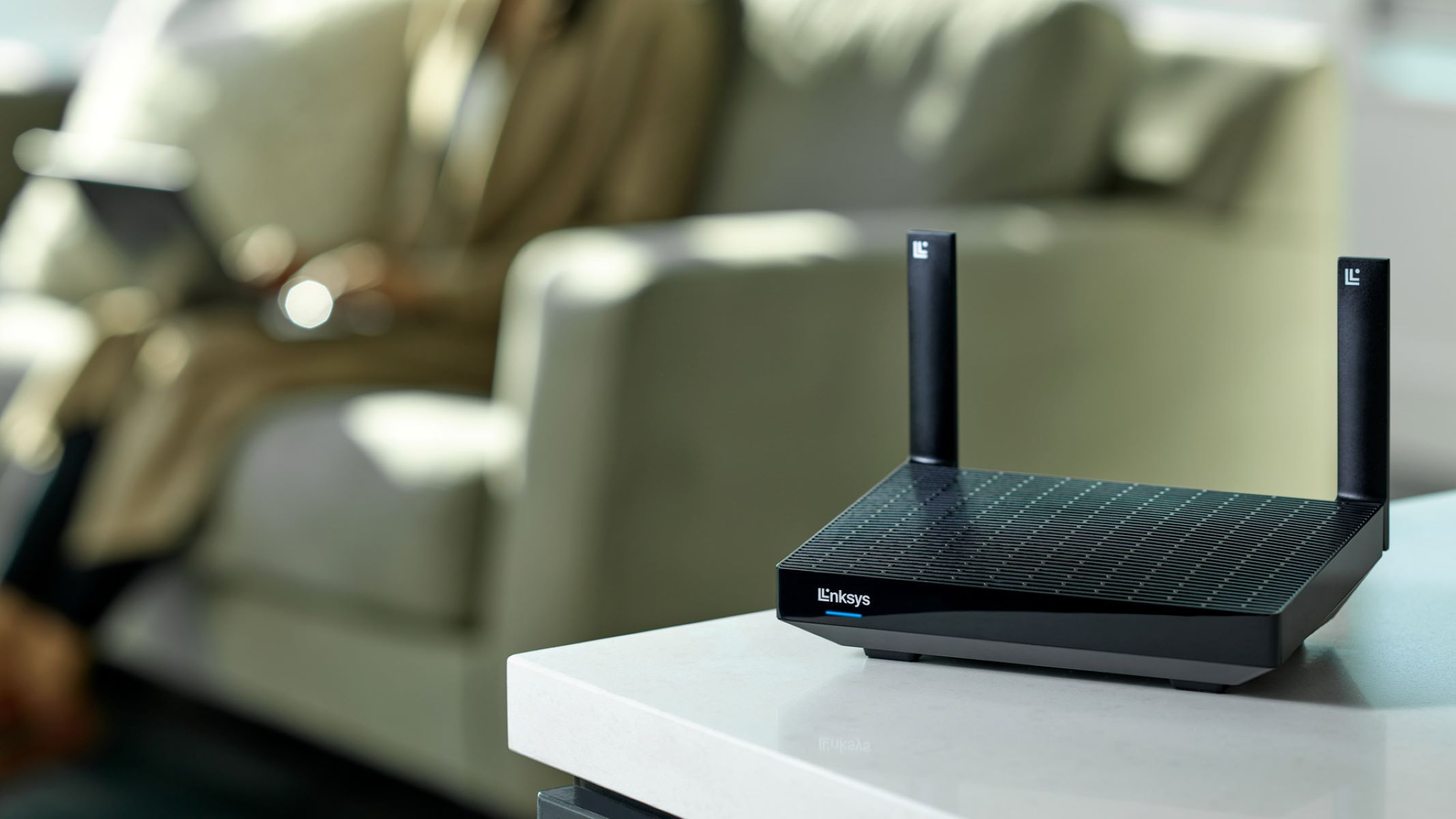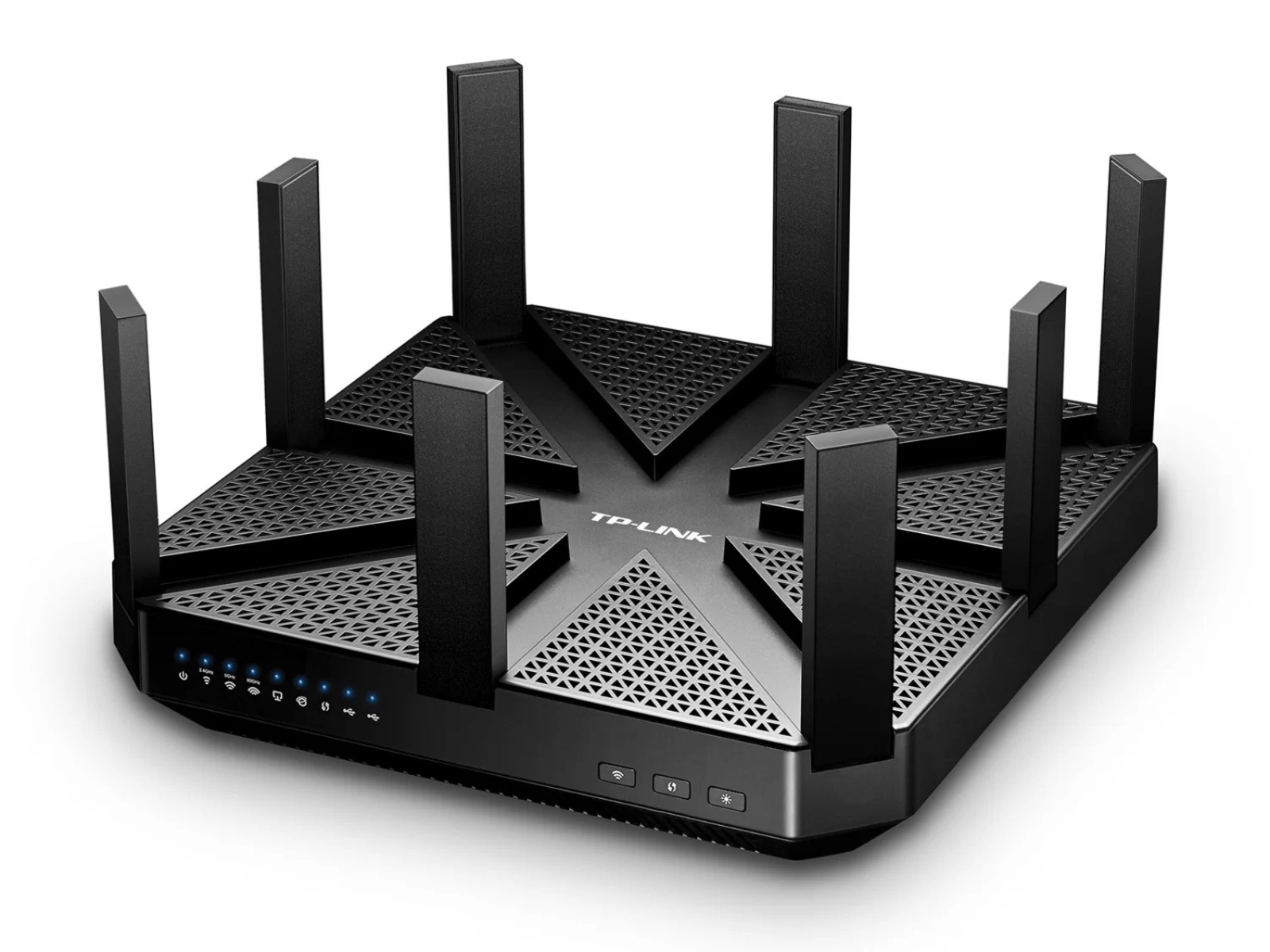Introduction
Securing your wireless router is crucial in today’s digital landscape, where the threat of unauthorized access and data breaches looms large. With more devices connected to the internet via your router, ensuring its security becomes paramount to protect your personal information and maintain a safe network environment.
A wireless router acts as the gateway between your home or office network and the internet. It allows multiple devices to connect wirelessly, enabling convenient internet access. However, without adequate security measures in place, your network becomes vulnerable to hackers, malware, and unauthorized users who can exploit weaknesses and gain access to your sensitive data.
Thankfully, there are various security options available for wireless routers, designed to combat these threats and safeguard your network. By implementing the right security measures, you can significantly reduce the risk of unauthorized access to your router and protect your devices from potential attacks.
In this article, we will explore some of the best security options available for wireless routers. We will discuss encryption protocols, access controls, and additional security features that you can leverage to fortify your network. Understanding these options will enable you to make informed decisions about which security measures to implement on your own router.
It’s important to note that while having a well-secured wireless router is essential, it is just one piece of the cybersecurity puzzle. It should be complemented with secure browsing habits, updated antivirus software, and regularly changing passwords to maintain a robust network defense system.
Join us as we delve into the world of wireless router security and explore the best options available to protect your network and keep your data safe.
Why is router security important?
In today’s digital age, where connectivity is essential for both work and personal use, router security plays a critical role in maintaining a safe online environment. Here are some compelling reasons why securing your wireless router is of utmost importance:
- Protection against unauthorized access: By securing your router, you prevent unauthorized users from accessing your network. This is particularly important for residential users who want to protect their personal information, such as financial data, passwords, and private conversations.
- Prevention of data breaches: A weakly secured router can act as a gateway for hackers, making it easier for them to gain access to your devices and steal sensitive information. Robust router security measures can significantly reduce the risk of data breaches and safeguard your personal and business data.
- Defense against malware and cyber threats: Cybercriminals are constantly evolving their techniques to exploit vulnerabilities in routers. A compromised router can be used as a launching pad for distributing malware or conducting other malicious activities. Implementing strong security measures ensures better protection against such threats.
- Secure network traffic: Unsecured routers may allow attackers to intercept and tamper with the data that flows between your devices and the internet. With proper router security, data encryption can be enabled, ensuring that your information remains confidential and secure from prying eyes.
- Preservation of bandwidth: Unauthorized users accessing your network can consume your bandwidth, leading to slower internet speeds and reduced performance for legitimate users. Securing your router prevents freeloaders from piggybacking on your network, resulting in improved bandwidth for your devices.
- Protection of connected devices: With the exponential increase in the number of internet-connected devices, securing your router becomes even more crucial. A compromised router not only compromises the security of your network but also exposes all connected devices to potential attacks.
Taking proactive measures to secure your wireless router is vital in today’s digital landscape. It not only protects your personal and sensitive information but also creates a safe and reliable network environment for both personal and professional use.
Types of security options for wireless routers
When it comes to securing your wireless router, there are several options available to protect your network from potential threats and unauthorized access. Let’s explore some of the most commonly used security options:
- WEP (Wired Equivalent Privacy): WEP was one of the earliest encryption protocols developed for wireless networks. However, it is now considered outdated and insecure. It uses a static encryption key that can be easily cracked, leaving your network vulnerable to attacks.
- WPA (Wi-Fi Protected Access): WPA is an improvement over WEP and provides stronger security for wireless networks. It uses a dynamic encryption key that changes periodically, making it more difficult for attackers to crack. WPA offers more robust encryption and is recommended for securing your network.
- WPA2 (Wi-Fi Protected Access 2): WPA2 is currently the most secure encryption protocol for wireless networks. It offers stronger encryption algorithms, such as AES (Advanced Encryption Standard), and is widely supported by most wireless devices. Implementing WPA2 is highly recommended for maximum network security.
- WPA3 (Wi-Fi Protected Access 3): WPA3 is the latest iteration of the Wi-Fi security protocol and provides even stronger security measures. It introduces several enhancements, such as individualized data encryption and protection against offline dictionary attacks. While still relatively new, WPA3 offers improved security for your wireless network.
- MAC Address Filtering: MAC address filtering allows you to specify which devices can connect to your network based on their unique MAC addresses. While it can provide an additional layer of security, it is important to note that MAC addresses can be spoofed, so it should not be relied upon as the sole security measure.
- Firewall: A firewall acts as a barrier between your network and the outside world, monitoring and filtering incoming and outgoing network traffic. By configuring and enabling a firewall on your router, you can block unauthorized access attempts and potential threats from reaching your network.
- VPN (Virtual Private Network): A VPN allows you to create a secure and encrypted connection between your device and the internet. By routing your internet traffic through a VPN server, it adds an extra layer of privacy and security to your online activities, protecting your data from interception or surveillance.
Each of these security options offers varying levels of protection for your wireless router and network. It is important to choose the most appropriate security measures based on your specific needs and the devices connected to your network. Combining multiple security options can provide a robust defense against potential threats and unauthorized access.
WEP (Wired Equivalent Privacy)
WEP, or Wired Equivalent Privacy, was one of the first encryption protocols developed for wireless networks. It aimed to provide a level of security comparable to that of a wired network. However, over time, its vulnerabilities came to light, and it is now considered outdated and insecure. Despite this, it is still worth understanding its limitations and why it should not be used as the sole security measure for your wireless router.
WEP encryption relies on a shared static encryption key, which means that the same key is used for all devices connecting to the network. This key is often set by the user and can be as short as 64 bits or as long as 128 bits. However, WEP’s biggest weakness lies in how it handles the encryption process.
The primary flaw in WEP is its flawed key scheduling algorithm, which makes it susceptible to brute force attacks. Attackers can capture enough data packets from the wireless network and use statistical analysis to deduce the encryption key. As a result, unauthorized individuals can gain access to the network, putting your data and privacy at risk.
Another weakness of WEP is the lack of strong authentication. It does not provide a proper authentication mechanism, making it easier for attackers to impersonate authorized devices and gain access to the network.
Furthermore, WEP does not have the ability to detect tampering with data packets. This means that even if an attacker manages to access the network, they can modify or manipulate the data being transmitted without detection. This poses a significant risk, especially when dealing with sensitive information or financial transactions.
Given these vulnerabilities, it is strongly recommended to avoid using WEP as the security option for your wireless router. Instead, opt for more advanced encryption protocols such as WPA or WPA2, which provide stronger encryption algorithms, dynamic encryption keys, and robust security features to protect your network.
While some older devices may still only support WEP, it is advisable to upgrade them or consider segregating them on a separate network with limited access to minimize the security risks. It is crucial to prioritize the security of your network to safeguard your data and protect against potential threats.
WPA (Wi-Fi Protected Access)
WPA, or Wi-Fi Protected Access, is an improved security option for wireless routers that addressed the vulnerabilities of WEP. It was introduced as a temporary solution until WPA2 became widely available. However, it remains a viable security option for networks that do not support WPA2.
One of the key improvements of WPA over WEP is the use of a dynamic encryption key. WPA employs a technology called TKIP (Temporal Key Integrity Protocol) that generates a new encryption key for each data packet. This makes it significantly more difficult for attackers to decipher the encryption key and gain unauthorized access to the network.
Another strength of WPA is its support for more robust authentication mechanisms. It introduced an authentication server called a RADIUS server, which verifies the credentials of devices attempting to connect to the network. This helps prevent unauthorized access by ensuring that only authorized devices can join the network.
Additionally, WPA improves upon WEP by introducing stronger encryption algorithms. It uses TKIP to encrypt data packets, providing better protection against brute force attacks. While not as strong as the encryption used in WPA2, it still offers a significant improvement over WEP and provides a reasonable level of security for most networks.
However, it is important to note that WPA is not without its limitations. It is susceptible to some security vulnerabilities, including dictionary attacks, where hackers attempt to guess the encryption key using a list of commonly used passwords or words. As a result, it is advisable to use complex and unique passwords to minimize the risk of such attacks.
While WPA still offers better security than WEP, it is recommended to use WPA2 whenever possible. However, if you have devices that are not compatible with WPA2, or your router does not support it, utilizing WPA is still a significant improvement over using WEP. It is crucial to regularly update your router firmware and ensure that your devices are using the latest security protocols available.
Remember, network security is a continuous effort. Keep abreast of the latest developments in wireless encryption protocols and adjust your security settings accordingly to stay one step ahead of potential threats. By implementing WPA or its successors, you can significantly enhance the security of your wireless network and protect your data from unauthorized access.
WPA2 (Wi-Fi Protected Access 2)
WPA2, or Wi-Fi Protected Access 2, is currently the most secure encryption protocol available for wireless networks. It is an improvement over its predecessor, WPA, and provides stronger security measures to protect your network from potential threats and unauthorized access.
One of the key enhancements introduced by WPA2 is the use of the AES (Advanced Encryption Standard) algorithm. AES is a robust encryption algorithm that ensures the confidentiality and integrity of data transmitted over your wireless network. This encryption algorithm is widely considered to be highly secure and is trusted by organizations and governments worldwide.
Another significant improvement in WPA2 is the elimination of TKIP, which was used in WPA. TKIP was vulnerable to some attacks, making it less secure compared to AES. By removing TKIP from the equation, WPA2 further strengthens the security of your wireless network.
WPA2 also offers stronger authentication mechanisms compared to WPA. It supports a more advanced authentication protocol called 802.1X, which allows for the use of an external authentication server, such as a RADIUS server. This ensures that only authorized devices with valid credentials can connect to the network, minimizing the risk of unauthorized access.
It is important to note that to fully benefit from the security features of WPA2, both the router and the connecting devices must support WPA2. Older devices that do not support WPA2 may not be able to connect to a network using this security protocol. In such cases, it is advisable to use the highest security option supported by those devices, such as WPA or WEP, as a temporary solution until the devices can be upgraded.
As with any security protocol, it is critical to use strong and unique passwords to further enhance the security of your WPA2-protected network. Avoid using common or easily guessable passwords, and ensure that the password is complex and difficult to crack.
While WPA2 is highly secure, it is always recommended to keep your router firmware up to date to ensure that any security vulnerabilities are addressed promptly. Regularly checking for firmware updates and applying them can help protect your network from emerging threats.
By adopting WPA2, you can significantly enhance the security of your wireless network, providing a robust defense against potential attacks and unauthorized access attempts. It is considered the gold standard for wireless security, offering peace of mind and protection for your sensitive data and personal information.
WPA3 (Wi-Fi Protected Access 3)
WPA3, or Wi-Fi Protected Access 3, is the latest iteration of the Wi-Fi security protocol, designed to provide even stronger security measures for wireless networks. It introduces several enhancements over its predecessors, WPA and WPA2, to better protect your network and personal data.
One of the key improvements in WPA3 is the elimination of some of the vulnerabilities that existed in previous protocols. WPA3 uses a stronger encryption algorithm called Simultaneous Authentication of Equals (SAE), also known as Dragonfly, which provides better protection against eavesdropping and brute force attacks.
WPA3 also introduces individualized data encryption, which means that each device connected to the network has its own unique encryption key. Even if an attacker manages to compromise one device’s encryption key, they cannot use it to decrypt the data from other devices on the network. This individual encryption provides an added layer of security, enhancing the overall protection of your network.
Another significant feature of WPA3 is protection against offline dictionary attacks. In previous protocols, attackers could capture a portion of the handshake process and use powerful computers to try numerous password combinations until they found the correct one. WPA3 mitigates this risk by implementing a secure key establishment protocol that makes it extremely difficult for attackers to crack the encryption key using offline dictionary attacks.
WPA3 also promotes easy setup and security for devices that may not have a traditional user interface, such as smart devices or Internet of Things (IoT) devices. It introduces a new mechanism called Wi-Fi Easy Connect, which allows users to connect devices to the network securely using methods like scanning a QR code or using a companion app. This simplifies the setup process while maintaining robust security measures.
It is important to note that while WPA3 offers significant security improvements, it may not be supported by all devices and routers yet. Compatibility with older devices may be limited initially, so it is advisable to verify that your devices and routers are WPA3-compatible before transitioning to this security protocol.
Overall, WPA3 represents a significant step forward in wireless network security. Its enhanced encryption, individualized data protection, and resistance against offline attacks make it a compelling choice for those seeking the highest level of security for their wireless networks. As the adoption of WPA3 becomes more widespread, users will be able to benefit from its advanced security features and enjoy a safer and more secure wireless experience.
MAC Address Filtering
MAC address filtering is a security feature available on many wireless routers that allows you to control which devices can connect to your network based on their unique MAC addresses. A MAC address is a hardware identifier assigned to network devices, such as laptops, smartphones, or IoT devices, by the manufacturer.
With MAC address filtering enabled, only devices with MAC addresses listed in the router’s access control list (ACL) are allowed to connect to the network. Any device attempting to connect without a recognized MAC address will be denied access.
MAC address filtering provides an additional layer of security for your wireless network. It can help deter unauthorized access and protect your network from unauthorized devices attempting to connect.
However, it is important to note that MAC address filtering should not be relied upon as the sole security measure for your network. MAC addresses can be easily spoofed, which means that an attacker can mimic a legitimate MAC address to gain unauthorized access. Therefore, MAC address filtering should be used in conjunction with other security measures to provide maximum protection.
To implement MAC address filtering, you will need to find the MAC addresses of the devices you want to allow access and add them to your router’s access control list. This process may vary depending on your router’s make and model, but it typically involves accessing the router’s settings interface and navigating to the MAC address filtering section. From there, you can either manually enter the MAC addresses or select them from a list of connected devices.
Keep in mind that managing MAC address filtering can be time-consuming, especially if you have many devices to add or remove. Additionally, it may cause inconvenience if you frequently connect new devices to your network or have guests who need temporary access.
Overall, MAC address filtering can be a useful security measure when combined with other security options like strong encryption and authentication protocols. While it is not foolproof, it adds an extra layer of control and can help in mitigating unauthorized access to your wireless network. Consider using MAC address filtering alongside other robust security measures to enhance the overall security of your network and protect your devices and data.
Firewall
A firewall is a critical security feature that acts as a barrier between your network and the internet, monitoring and filtering incoming and outgoing network traffic. It helps protect your wireless router and connected devices by controlling and blocking unauthorized access attempts and potential threats.
Firewalls operate based on predefined rules and policies that determine which types of network traffic are allowed and which are denied. They examine the data packets travelling through the network and apply these rules to ensure only legitimate and safe traffic is allowed through.
There are two types of firewalls commonly used to protect wireless networks: hardware firewalls and software firewalls.
Hardware firewalls are built into the router itself and provide network-wide security. They examine traffic at a network level, providing an added layer of defense against potential threats. Hardware firewalls can filter traffic based on IP addresses, port numbers, and protocols, making them highly effective in protecting against external attacks.
Software firewalls, on the other hand, are installed on individual devices such as computers or smartphones. They provide protection at the device level, monitoring and controlling inbound and outbound traffic. Software firewalls offer granular control, allowing users to define specific rules for each application or service running on the device.
By implementing a firewall on your wireless router, you can benefit from several security advantages. Firewalls can:
- Block unauthorized access attempts: Firewalls can detect and block any unauthorized attempts to access your network, preventing potential hackers from infiltrating your devices and stealing sensitive information.
- Filter malicious traffic: Firewalls can detect and filter out suspicious or malicious network traffic, such as data packets containing malware or viruses, protecting your devices from infection.
- Protect against network-based attacks: Firewalls defend against common network-based attacks like Denial of Service (DoS) and Distributed Denial of Service (DDoS), which can cripple a network by overwhelming it with excessive traffic.
- Prevent outbound communication to malicious IPs: Firewalls can block outgoing network traffic to known malicious IP addresses, preventing your devices from connecting to potentially harmful websites or command-and-control servers.
It’s important to keep in mind that while firewalls provide essential protection, they should be updated regularly to ensure they are equipped with the latest security features and patches. Additionally, firewalls should be configured properly to avoid false positives or inadvertently blocking legitimate network traffic.
By combining a firewall with other security measures like encryption, strong authentication protocols, and regular device updates, you can establish a robust defense system to safeguard your wireless network and protect your devices and data from potential threats and attacks.
VPN (Virtual Private Network)
A VPN, or Virtual Private Network, is a powerful security tool that provides a secure and encrypted connection between your device and the internet. It creates a private network within a public network, allowing you to connect to the internet securely, even when using untrusted or public Wi-Fi networks.
The main purpose of using a VPN is to ensure privacy and anonymity by encrypting your internet traffic and routing it through a private server before reaching its destination. This makes it difficult for anyone, including hackers or government authorities, to monitor your online activities or intercept your data.
The benefits of using a VPN for wireless router security are numerous:
- Secure data transmission: With a VPN, your internet traffic is encrypted, meaning that even if someone manages to intercept it, they will only see scrambled data that is unreadable without the decryption keys.
- Protection from Wi-Fi snooping: Public Wi-Fi networks, such as those found in coffee shops or airports, are notorious for being susceptible to snooping. By connecting to a VPN, your data is shielded from potential eavesdroppers on the same network.
- Access to geo-restricted content: VPNs enable you to bypass geographic restrictions and access content that may be blocked in your location. By connecting to a server in a different country, you can appear as if you are accessing the internet from that location and gain access to restricted content or services.
- Masking your IP address: A VPN hides your IP address, replacing it with the IP address of the server you’re connected to. This adds an additional layer of privacy as your real IP address and location are not exposed to websites or services you visit.
To set up a VPN on your wireless router, you will typically need to purchase a VPN subscription and configure the router to establish a connection to the VPN server. Some routers may have built-in VPN functionality, while others may require the installation of third-party firmware or specialized VPN clients.
Keep in mind that while VPNs offer excellent privacy and security benefits, they can introduce a slight decrease in internet speed due to the encryption and routing processes. However, the trade-off in terms of enhanced security and privacy is generally considered well worth it.
It is essential to choose a reputable VPN provider that prioritizes user privacy and has a strong track record in protecting customer data. Evaluate their encryption protocols, server locations, and privacy policy before making a decision.
By utilizing a VPN on your wireless router, you can significantly enhance the security of your network, protect your sensitive data, and enjoy a more private and secure online experience, regardless of your location or the network you’re connected to.
Factors to consider when choosing the best security option
Selecting the best security option for your wireless router is crucial for maintaining a secure network environment. Here are some key factors to consider when making this decision:
- Security Strength: Evaluate the strength of the security option in terms of encryption protocols, authentication mechanisms, and vulnerability to attacks. Choose a security option that offers robust protection against potential threats and unauthorized access.
- Device Compatibility: Consider the compatibility of the security option with your devices. Ensure that your devices support the chosen security protocol to ensure seamless connectivity and adequate protection. Compatibility is particularly important if you have older devices that may not support the latest encryption standards.
- User-Friendliness: Assess the ease of implementation and management of the security option. Make sure the option you choose fits your technical expertise and comfort level. A user-friendly interface and clear setup instructions can make the process smoother.
- Performance Impact: Consider the potential impact of the security option on the performance of your network. Some security measures, such as VPNs, may introduce a slight decrease in internet speed due to the encryption process. Evaluate the performance trade-offs and choose an option that balances security and network performance according to your needs.
- Router Compatibility: Ensure that your wireless router supports the chosen security option. Different router models may have varying degrees of compatibility with specific encryption protocols. Consult the router manufacturer’s specifications and documentation to verify compatibility before making a decision.
- Network Size and Needs: Consider the size and requirements of your network. Larger networks may benefit from security options that offer centralized management, such as RADIUS authentication servers. Assess your network’s specific needs and select the most appropriate security solution.
- Future-Proofing: Anticipate future advancements and trends in wireless security. Choose a security option that is forward-compatible and can adapt to evolving security standards. Stay informed about emerging technologies to ensure your network remains secure as new threats and vulnerabilities arise.
By carefully considering these factors, you can make an informed decision on the best security option for your wireless router. Remember that implementing a comprehensive security strategy involves combining multiple security measures, such as encryption protocols, authentication mechanisms, firewalls, and VPNs, to create a layered defense system that protects your network from potential threats and unauthorized access.
Conclusion
Securing your wireless router is paramount to ensure the safety and privacy of your network, devices, and personal data. With a myriad of security options available, it is important to choose the best security measures that align with your needs and provide maximum protection.
Start by considering the strength of the security option in terms of encryption protocols and authentication mechanisms. Options such as WPA2 and WPA3 offer stronger security compared to outdated protocols like WEP. Assess the compatibility of the security option with your devices and the user-friendliness of its implementation and management process.
Be mindful of the potential impact on network performance and choose an option that strikes the right balance between security and speed. Ensure that your wireless router supports the selected security option and consider the size and requirements of your network to cater to specific needs, such as centralized management for larger networks.
Remember that securing your wireless router is just one aspect of a comprehensive security strategy. It should be complemented with secure browsing habits, regular updates of firmware and software, and strong passwords to maintain a robust defense system.
Continuously monitoring emerging technologies and staying informed about the latest security advancements will help you future-proof your network and adapt to evolving threats. Regularly review and update your security measures to stay one step ahead of potential risks.
By incorporating these considerations and implementing the appropriate security measures, you can create a safe and secure wireless network environment that protects your data, devices, and privacy. Invest the time and effort in choosing and implementing the best security options for your wireless router to create peace of mind and ensure a secure online experience for yourself and your network users.







